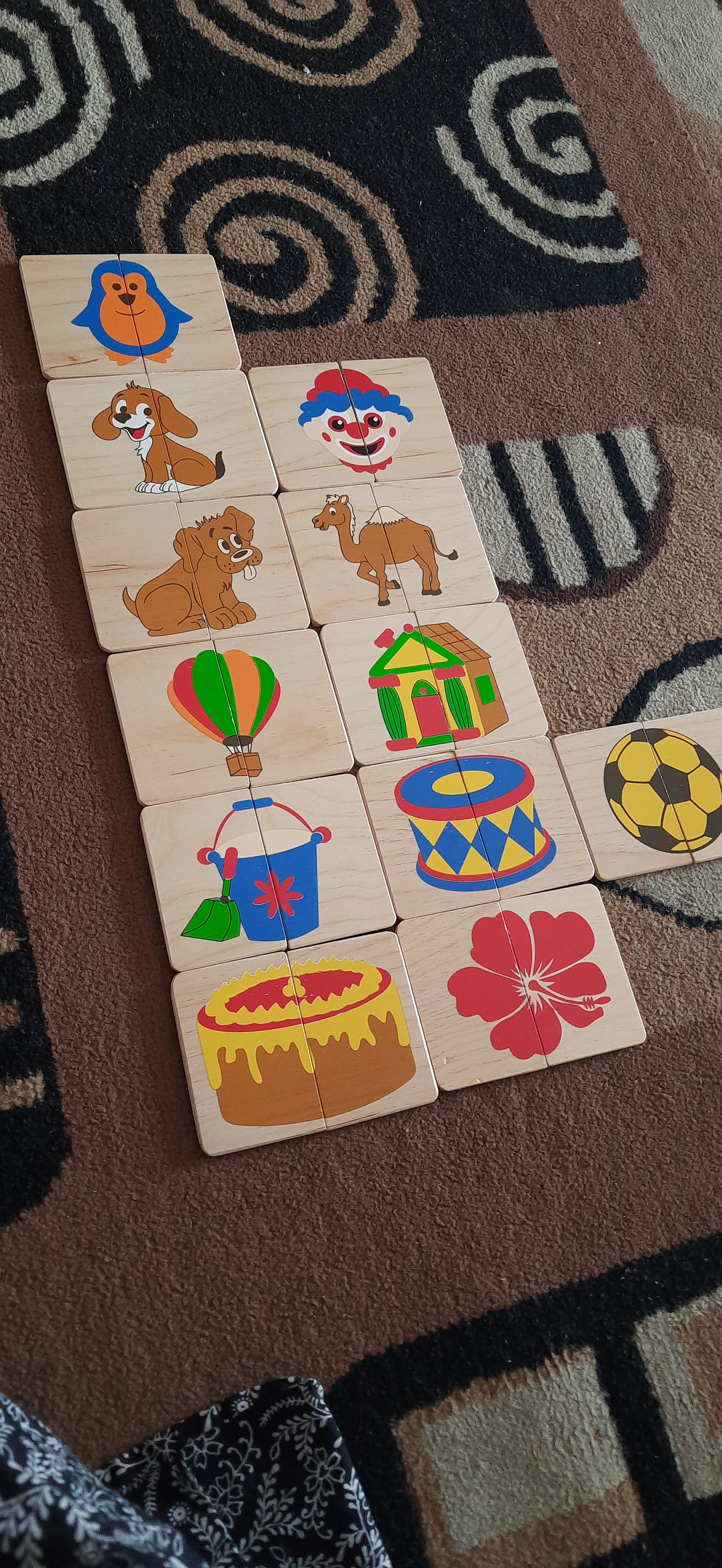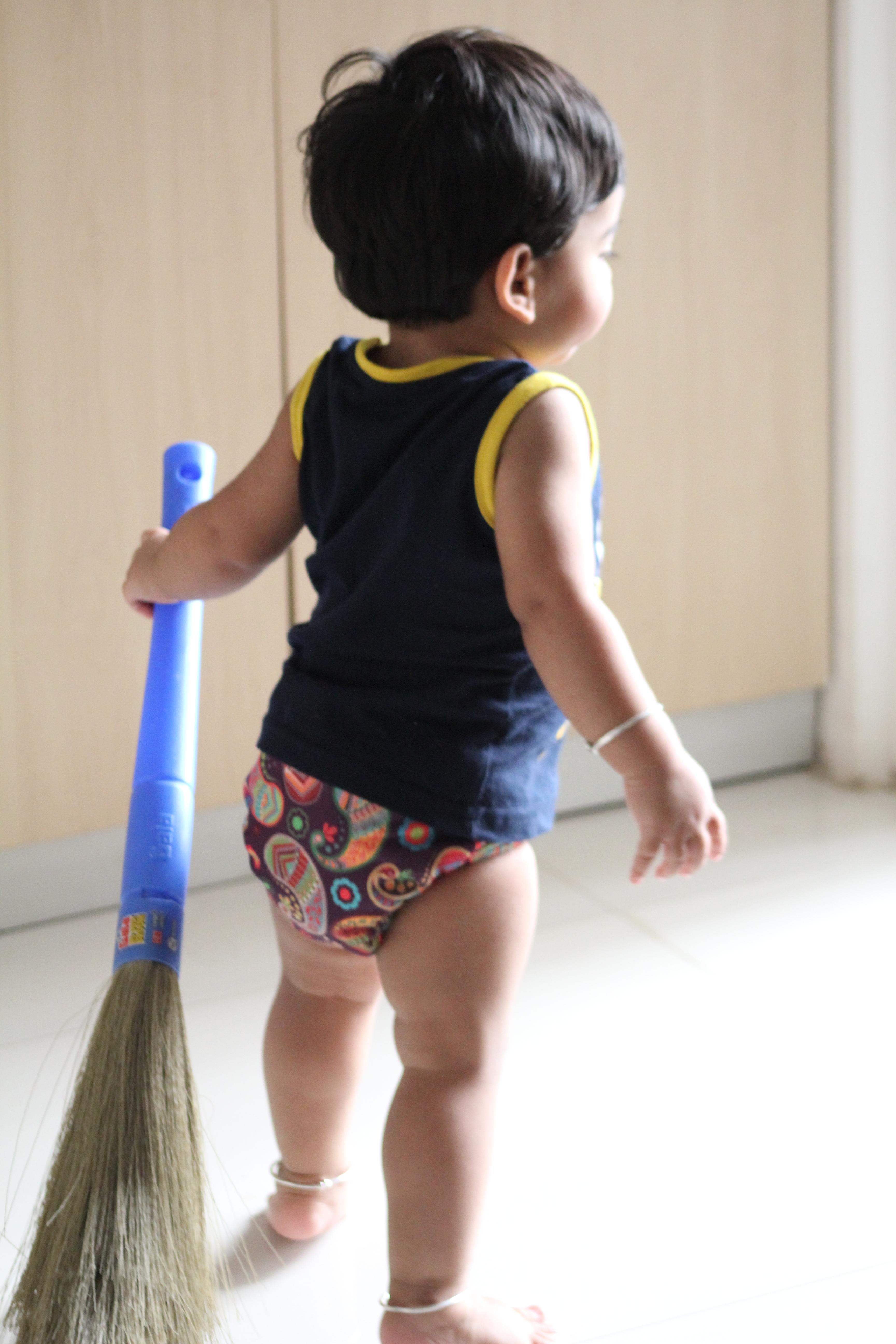To me , puzzles are anything which involve activating the brain and figuring a way out. For kids , these range from simple peg puzzles to complicated 50-piece jigsaws.
For S , we introduced puzzles when he was about 8 months old. To begin with , he was exposed to a simple shape sorter , gradually progressed to chunky peg puzzles, and presently loving his 2- & 3-piece jigsaws.
Mentioned below are what my son loved at each stage. The type of puzzle given to the child would depend on the child’s interest and hence might not be the same across all households.
- 8 months + –– Fisher price matching puzzle
These contain chunky pieces that are light in weight and easy to hold. It introduces children to the concept of ‘matching’ and helps in improving their grasp and motor skills.

- 12 – 15 months – Wooden Peg puzzles
These chunky wooden pieces come with knobs which make it easier for the child to hold and place the pieces in the respective places.

- 16 months + — 2-piece matching puzzles
The primary motive of these puzzles is to introduce the child to the concept of halves and how 2 similar halves make 1 complete picture. The wooden ones we have from Edu edge will fall under S’s top 5 favorites!

- 18 months + –
- Wooden outline puzzles
These puzzles come with a wooden board and chunky pieces with knobs placed on them. You could begin with 2-piece boards and gradually progress to smaller and increasing number of pieces. S’s favorites are the continent , dinosaur & tortoise boards.

- 2 Pieces jigsaw These set the base for the kids to understand how small pieces come together to form a complete picture. The ones from Biblubox are sturdy enough for the toddler’s hands & also come in several themes as well.


This set from Indigrow is worth a buy and depict the images of India as realistically as possible.
- Shadow matching puzzles – This set would include 2 pieces of each picture , one in white and one in black to enable the kid to identify the shadows of each picture. This falls under my top 5 to improve logical thinking and to improve focus.

These are just few options to introduce the kids to the world of puzzles. The age at which a child opens up to a particular puzzle will vary. As always , go by your child and don’t go by what the recommended age says. Improved focus , concentration , analytical & logical thinking , fine motor skills are just few of the many pros of introducing several puzzles to kids at a young age. To me , the biggest pro that I have noticed is these keep S occupied for minutes together during his independent playtime. Could it get better than the child occupying himself for minutes together while you sip a hot cup of chai?
Until next time…








